Amarillis presented their name to the whole family of plants from the bulbs, which are often confused with the hypiperum. Although this flower is inferior to his twin in the color palette and variety of varieties, Amarillis is less capricious in care, more hardy, produces more buds per season and has a delicate flower color. So that the flower pleased with its unusual blossom, it is important to know some features of care for it and landing.
Amarillis Belladonna - Culture Description
The plant has an elongated pear-like large-sized bulb in a diameter of 5-6 cm with an elongated "neck". Tubers have strong roots that do not die during the rest. One bully releases up to 16 leaves, they are located opposite each other in front of each other. The width of the sheet is 2-3 cm., While its length can reach 60 cm.
- The leaves are formed from the bulbs only after the flowering of buds in the autumn period. They die only by the end of April or the beginning of May before the rest stage. This plant differs from the hypipestrum, which leaves appear simultaneously with buds.
- Coloros from Amarillis Belladonny grows up to 1 meter, develops very quickly. With good care and observance of the landing rules, the plant can develop from the initial stages of the growth of floweros until its full bloom in just 7 days. Coloros contains 12 funnel-shaped buds with petals in the amount of 6 pieces. The crown is formed by a diameter of up to 10 cm. The flavor of flowers is saturated and strong, resembles the smell of hyacinths.
- Culture blooms at the end of summer, flowering period is long enough. Buds are revealed in turn and bloom 4-5 days each of them. While Hippeastlasts bloom in mid-February and have a small amount of inflorescences that are revealed at the same time.
- After flowering, the plant forms fruits in the shape of a box that contains from 6 or more seeds. They are completely ripening for 30-40 days. The color gamut plants is very narrow and limited to pink and white variations of buds. You can observe buds from gentle colors to saturated shades, but only within the specified palette.
Amarillis Belladonna - Poisonous Plant
If you decide to grow in the garden or indoors this plant, it is important to remember that it is poisonous. In a small concentration, the dangerous substances of the flower will not bring significant harm to an adult man, but for children and pets can provoke poisoning and deterioration in health.
Toxic substances are contained in bulbs, leaves and flower stems. If a large number of poison plants appear in the body of a large number of poison, there is a decrease in pressure, there is a strengthened salivation, problems arise with the work of the intestine and the nervous system. In this case, it is important to seek medical attention in a timely manner.
To distinguish hypipers from a poisonous flower, you need to know their main differences. Amarillis is suitable for growing both in the pot at home and in the open soil. While his fellow grows only in the room. A poisonous flower is often formed by subsidiaries, and the hypipestrum does not have them.
Amarillis has dense blossoms with buds, which is much more formed per season. Hyppeastramum has a hollow, with large buds, but smaller. Although plant landing rules are the same, the period of their flowering, breeding and peace is different. Consequently, the care of these varieties of colors is different.
Amarillis Belladonna - landing and care
Amarillis grows both indoor and garden flower. Only in the latter case you need to carry them into containers for wintering. To achieve abundant flowering, experienced gardeners grow a culture indoors. Also indoor culture is less capricious in caring.
These flowers belong to undemanding plants. The troubles may occur only when ensuring the temperature regime in the rest stage. Caring for amaryllis does not differ from other indoor plants, so grow them in your room or in the garden, even novice flowers.
Flower Care Amarillis Belladonna in Peace Stage
For abundant and beautiful flowering, the plant needs to ensure proper care in the rest stage. He lasts long. To the bulb drive out a new bloomon, Amarillis need to take a rest of only 6 weeks. The optimal phase of rest is 7-8 weeks.
- The flower rest arrives in the summer months. He begins after complete drying of the leaves at the end of May and continues until the removal of the new bloomon (the end of August is the beginning of September).
- When the plant is at rest phase, it is necessary to rearrange it into a darkened place, cutting watering and not to make fertilizers. Reducing the temperature during peace is not a must, but without it you will not achieve subsequent abundant flowering among Amarillis.
- The period of the appearance of buds you can adjust yourself by offseting the reasons of rest. Thus, blooming culture can at any time of the year to a certain date, by calculating the timing of rest and the development of floweros.
Flower lighting conditions
No special conditions for the coverage of culture are not required, it will be enough to provide it in the phase of development. This period falls on the growth of the flower, and the distance from the leaves. The flower requires the maximum amount of light from any sources.
For Amarillis, select the lightest place in the room. The sun's rays with direct hit on the plant do not affect only twice in noon. If the sun illuminates the flower in the morning or in the evening, then no particular harm will bring. During growth, the shading is not recommended, since the buds may fall or not start blossoming at all.
Ensuring the temperature regime of Amarillis Belladonna
At the flowering phase of the plant or its development (including the growth of leaves), it is not required to adhere to a certain temperature of the air in the room. Although Amarillis is a thermal-loving plant, it develops well with any degree of heat.
Special attention to the temperature regime should be given at the stage of the flower rest. The optimal temperature for the plant is 10 degrees. It is also allowed to leave bulbs indoors, where the temperature from 5 to 12 degrees of heat. Only under such conditions you will provide the culture of subsequent abundant flowering.
Amarillix Belladonna irrigation schedule and air humidity level
Most bully colors are afraid of dampness and highly moistened soil, but not in the case of Amarillis. This flower loves the high humidity of the soil, especially during the period of active flowering. At the same time watering the plant must be abundant, but not often. The next portion of moisture should only be completely drying the upper layer of the soil.
After flowering, the irrigation frequency is gradually decreasing and practically stops at the stage of rest. During this period, only a slightly moistage soil is required, the complete drying of the soil is not categorically recommended.
In high humidity, the flower does not need, so it is not necessary to spray it. It will be enough to periodically wipe the leaves from dust. Growing Amarillis Belladonna in the bathroom or rooms with high humidity can not be.
Conditions of transplant and primer preparation for Amarillis Belladonna
The transplanting of a bully plant follows at the stage of rest when the ground parts of the plant completely dismissed. Also allowed a transplant in the initial phase of rest or before starting abundant irrigation.
When transplanting Amarillis Belladonna, it is recommended to completely replace the soil. It is allowed to use ready-made soils for planting bulbous colors. At the same time, it should be nutritious, to pass well with moisture. You can independently prepare a mixture of soil for planting. To do this, mix in equal proportions of leaf and turf soil, overwhelmed with river sand.
- Recomposing culture is recommended every 4-5 years. A transplant is also allowed if many children have been formed, and the bulb itself lacks a place for full development. The rest of the time it follows each year to replace the top layer of the soil. In this case, it is important to keep the depth of the bulbs.
- The roots of the bulbs in the amaryllis do not die during peace, so the transplant procedure should be carried out carefully. Place the drainage layer on the bottom of the tank. Its minimum height should be 3 cm. To reduce soil acidity, use crushed chalk for drainage.
- Lukovitsa lay down in the center of the container. When landing colors, it is important to observe the following conditions. The distance from the bulbs to the walls of the tank should not be less than 2-3 cm. The bulb itself is immersed in the soil half or at all on a third of its heights. Group cultivation of amaryllis is allowed. In this case, it is necessary to make between them between the gaps of 10 cm.
- During the transplant, carefully inspect the tubers. If there are small areas rot, they are cut. The location of the cut is necessarily treated with ash or crowded coal. Dry and rotten roots are also trimmed. At this stage, you can separate the subsidiaries.
Features of making feeding for Amarillis Belladonna
Before using the fertilizers for amaryllis, the variety of this plant should be determined, since the type and intensity of the feeding is dependent. So old color varieties require only organic fertilizers in liquid form, while modern varieties prefer only mineral drugs.
Therefore, it is best to use complex fertilizers that are designed for bulbous colors or specifically for amaryllis. In addition, various types of feeding are required for the flowering and building extension of foliage. Otherwise, the period of making fertilizers, as well as their frequency, is the same for all varieties of culture. They are held only at the stage of active growth and flowering. Phase rest does not need to use fertilizers.
Amarillis Belladonna - Photos Plants
Flowers Amarillis Belladonna can be grown in the garden or admire their flowering at home. In any case, the flower needs to be properly leaving the conditions of lighting and temperature regime. Only having mastered the principles of culture culture, you can admire the long blossom of amaryllis.

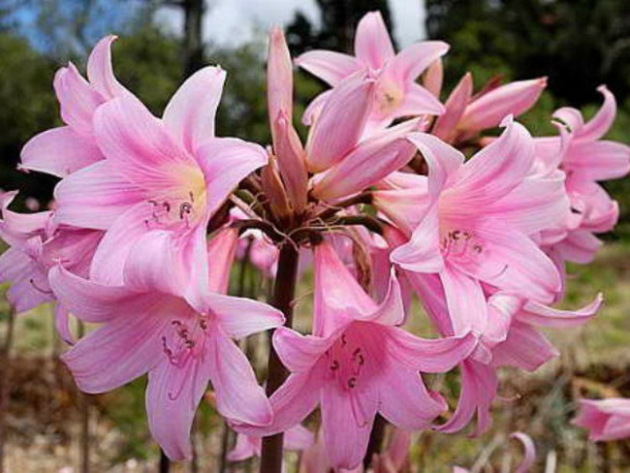




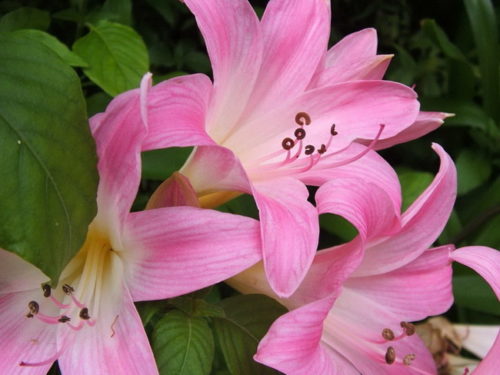
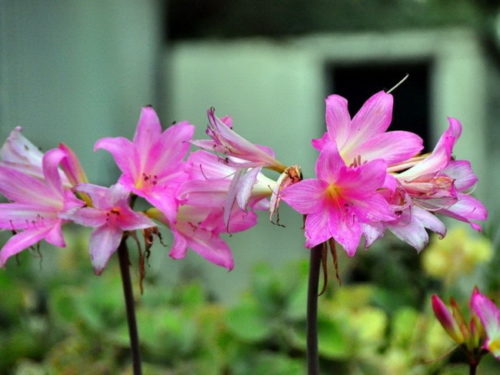

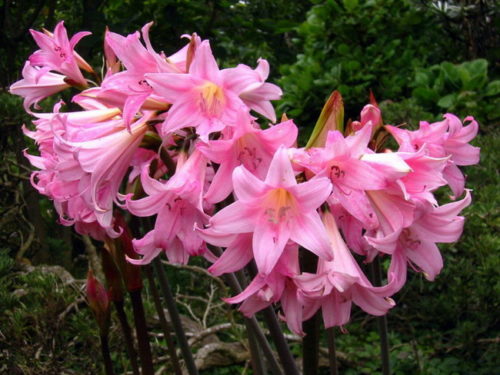
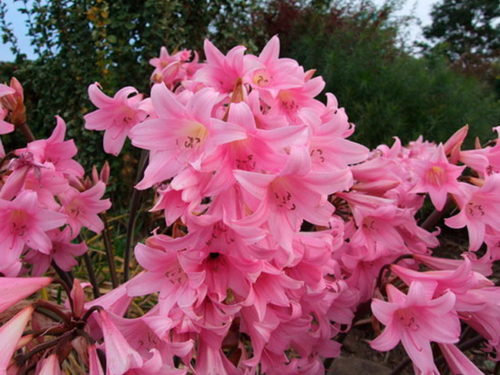
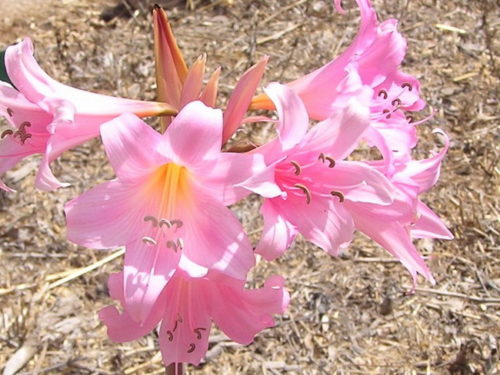
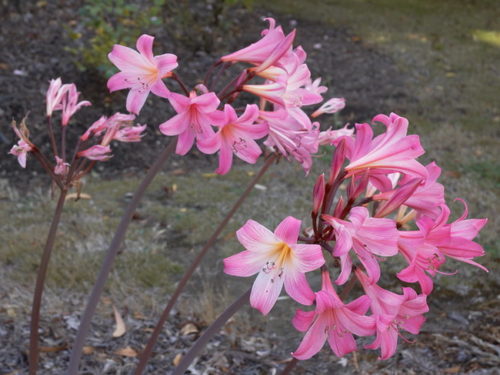
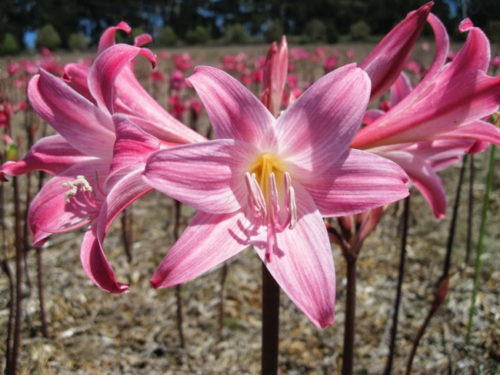
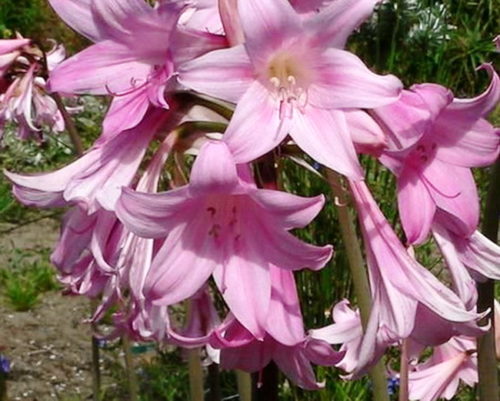
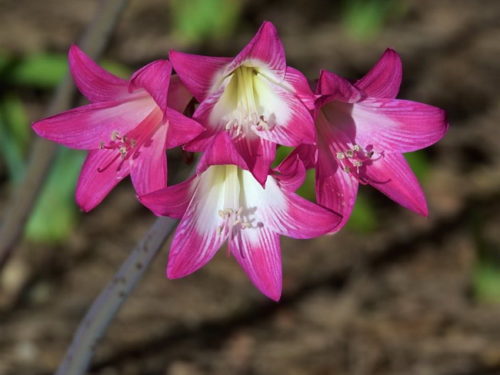

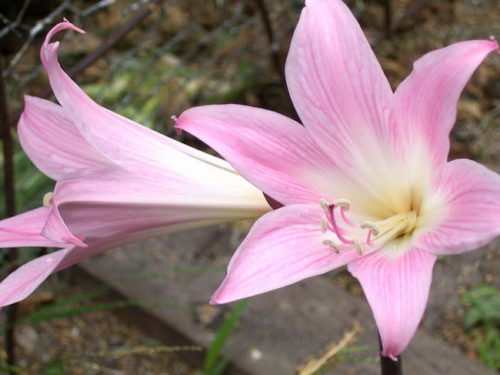
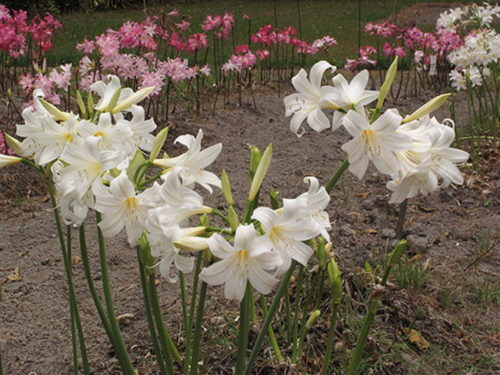
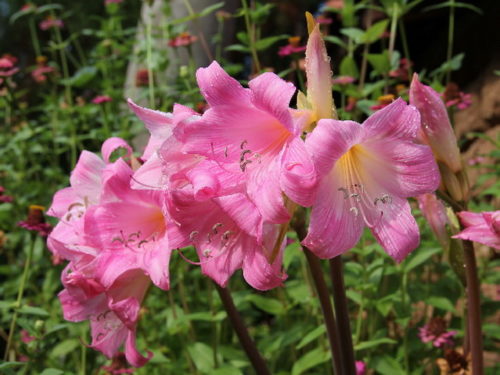
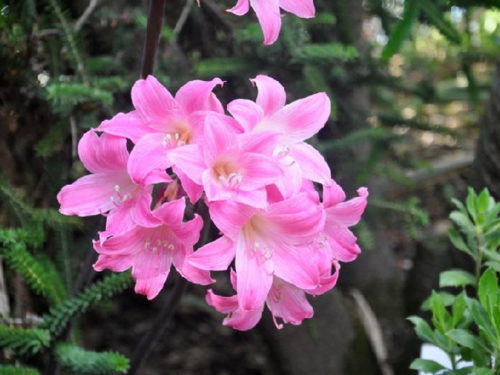
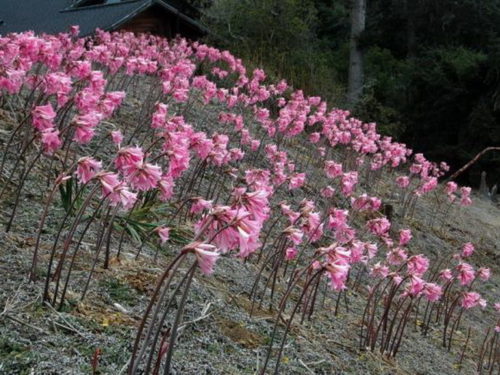

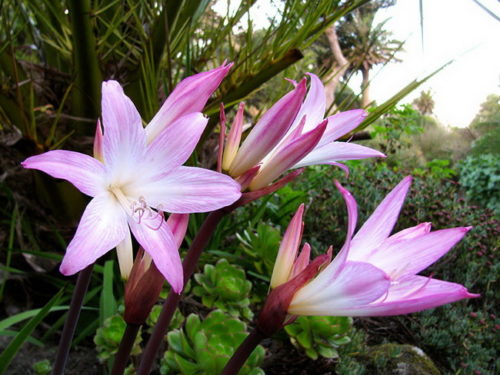


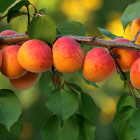


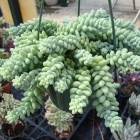








 Start a discussion ...
Start a discussion ...